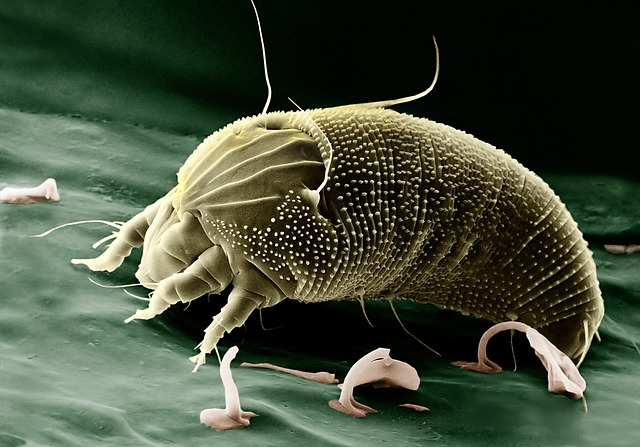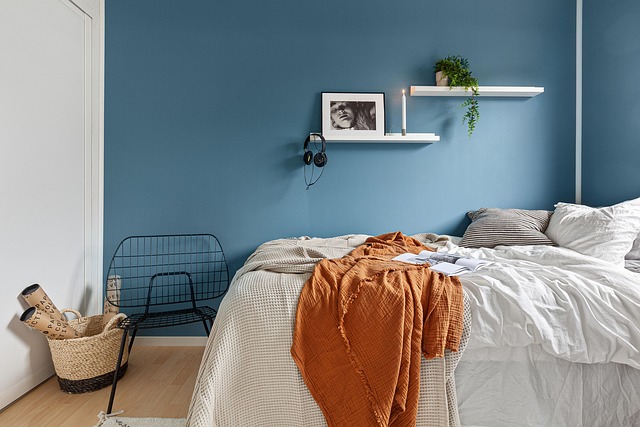I adore going to sleep. My bed feels like a sanctuary — and I’m not the only one who thinks so. Every night, my two cats sprint to nestle under the covers with me. It may not be the most hygienic habit, but I reassure myself that they’re indoor pets and don’t shed very much. Still, they are animals — and I occasionally wonder whether I’m simply in denial.
++ The peregrine falcon: nature’s fastest killer in the skyThe peregrine falcon: nat
We all spend roughly a third of our lives in bed, shedding skin, perspiring and leaving behind all sorts of biological traces. Add other bodies — partners, children or pets — and our mattresses become complex little ecosystems of their own. Despite this, bed hygiene receives far less attention than so-called “sleep hygiene”, which focuses on routines that promote restful sleep. In reality, keeping our beds clean is equally important for our health and comfort.
A YouGov survey in 2022 revealed that Britons take varied approaches to bed maintenance. Over a third of adults washed their sheets every two weeks, while around 28 per cent did so weekly. At the other end of the spectrum, one in five admitted to keeping the same sheets for three to four weeks, and a small but notable minority stretched the delay to two months or more. Younger adults and men were the least fastidious.
Across the Atlantic, a 2017 survey showed the average American changed their sheets every 24 days. If many saw their bedding under a microscope, they might rethink their habits. Our skin hosts millions of bacteria and fungi — and when we’re unwell, viruses too. These organisms inevitably transfer to our sheets.
Although most are harmless, some can cause problems. Staphylococcus aureus, for example, can trigger skin infections, while certain strains of E. coli and respiratory viruses such as rhinovirus also end up on our bedding. Dust mites live alongside them, thriving on dead skin cells and multiplying in the warm, humid environment we create each night. Left unmanaged, this build-up can aggravate respiratory issues, worsen skin conditions and interrupt sleep — an unwelcome cycle that ultimately affects our wellbeing.
++ Power and finesse: the monkey that bites like a jaguar
Dr Primrose Freestone, a clinical microbiologist from the University of Leicester, offers a blunt comparison: “Tube seats and public toilets are cleaned every day. Your bed sheets aren’t.” The point is clear — even if a bed sees fewer “visitors”, it silently accumulates plenty. Those prone to allergies, eczema or acne may suffer more, explains Dr Chris Callewaert, a microbial ecologist at Ghent University. Bacteria linked to these conditions transfer readily between our skin and bedding, continually reinfecting the body.
Humidity makes things worse. We can release several hundred millilitres of sweat each night, even in winter. Sweat feeds microbes and contributes to yellowed sheets. Sebum, saliva and — less pleasantly — traces of faecal particles released when we pass wind also contribute to the biological soup.
Despite how unsavoury this sounds, a mildly dirty bed isn’t inherently dangerous for healthy adults. Our microbiome — the complex community of organisms that lives on the skin — helps train and support our immune system. A degree of microbial exposure may even be beneficial. Still, visibly dirty, smelly or sticky sheets can undermine sleep quality and certainly won’t win social points. As Freestone puts it: “You’ll smell. People don’t like it much.”
Partners add their own microbial communities into the mix. Men and women have notably different skin microbiomes, influenced by hormones and hygiene habits. Even among same-sex partners, diet and personal care routines introduce variety. This sharing isn’t harmful in itself, but it can shift microbial balance — sometimes in irritating ways.
Parents allowing children into their beds face extra challenges. Young immune systems, paired with often-questionable hygiene, create the perfect storm for the spread of infection.
Pets complicate things further. Even indoor cats, like mine, harbour bacteria entirely different from those of humans. Animals also engage in behaviours we’d rather not think about: “Pets lick their bottoms, then they lick you… then they lie on your sheets,” Freestone says. Their saliva alone contains hundreds of microbial species.
Food crumbs in bed only fuel the microscopic activity. Anything from chocolate flakes to crisp crumbs becomes a meal for fungi and bacteria.
Clothes, bags and shoes introduce another layer. While general dust and dirt from the outside world pose limited risk, bed bugs are the real stowaways to avoid. Found on public transport and in hotels, these pests are not linked to cleanliness but are notoriously difficult to eradicate once they enter the home.
Freestone takes no chances when travelling, wrapping her suitcase in clingfilm to deter hitchhikers. If she spots signs of bed bugs — tiny dark specks on a mattress — she leaves immediately. Ultimately, the level of cleanliness required is personal. Healthy adults can tolerate a certain amount of microbial exposure, and some may even benefit from it. However, regularly refreshing bedding, especially after illness or shared sleep, remains a sound and sensible practice. Fresh sheets might not solve every problem — but they can certainly make bedtime feel like the sanctuary it’s meant to be.





